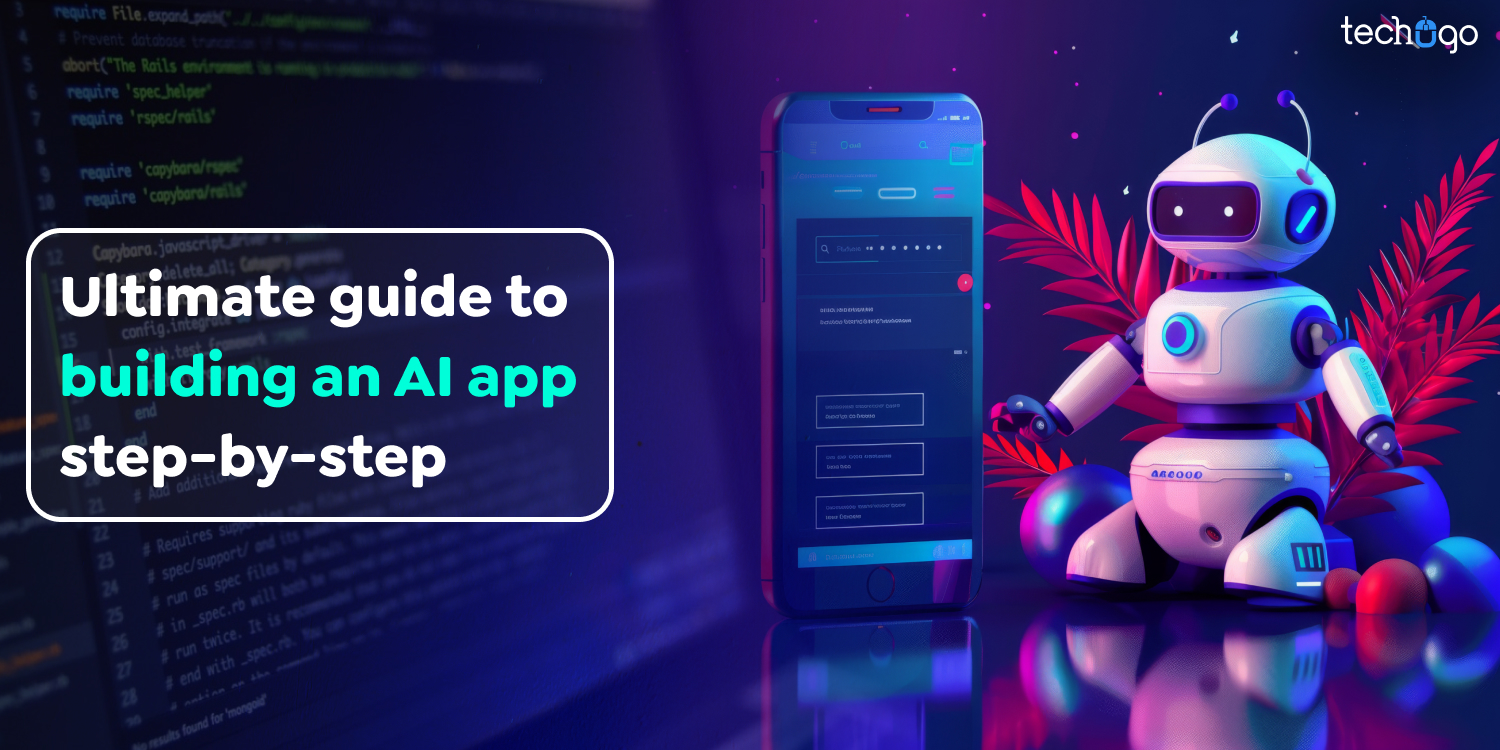7 Oct 2024
Updated on January 31st, 2025
How to Create a Diet and Nutrition Tracker App Like Lifesum
Matthew Connor
The health and fitness industry is on the rise, and a significant portion of this growth comes from nutrition. Many people turn to smartphones for advice, abandoning calorie-counting notebooks and calorie counters for elegant apps that monitor food consumption, give customized plans, and inspire them to meet their targets. One of the leading apps is Lifesum.
The Lifesum platform’s user-friendly interface, personalized plans, and massive food database have enthused millions of customers and generated significant revenues. But what is the secret behind why Lifesum works? How can you build an identical platform that catches the attention of a healthy group?
In this post, we’ll explore the secrets to Lifesum’s growth, looking at aspects that keep customers engaged and on the right track. We’ll also explore the process to develop apps like Lifesum, from choosing the best technology stack to creating an intuitive interface. Whether you’re a veteran developer or a new entrepreneur with a keen interest in fitness, this article provides the necessary information to build the most popular diet-tracking app.
What Is Lifesum?
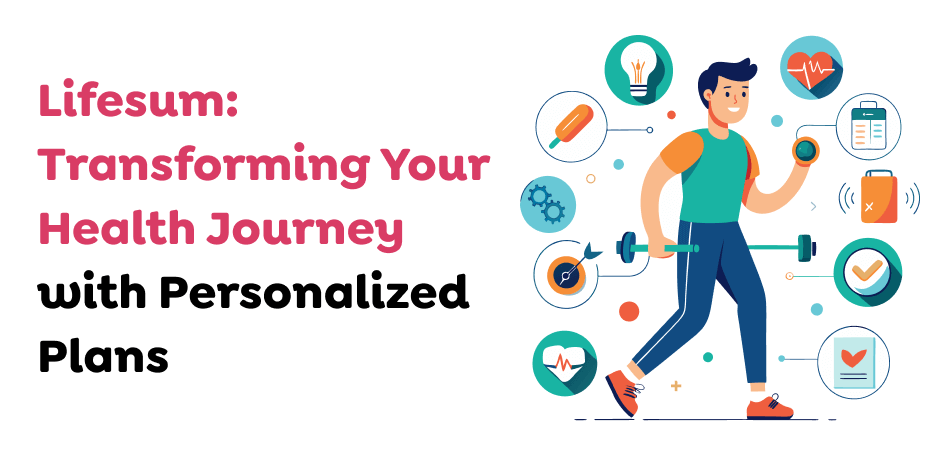
A well-known diet program and nutrition tracking application, Lifesum aids users in achieving their fitness goals. It has food planning, calorie tracking, and customized navigation. Lifesum was first introduced in 2011 and now averages over 50 million downloads. It is also home to a high score from its users. The app that tracks your nutrition is designed to make healthy eating easier through easy-to-use guides and tools.
It lets users monitor their intake of calories and concentrate on the modifications they’d like to implement in their food habits to reach an ideal body weight and body shape. It doesn’t matter if it’s paleo, fasting, or a sugar-free lifestyle; Lifesum helps users achieve everything. Ultimately, Lifesum is nothing less than a lifesaver software for those who wish to achieve the ideal shape through the correct food choices.
Also Read : How to Create a Video Editing App Like Splice: From Concept to Launch
Reasons To Develop A Diet And Nutrition Tracker App Like Lifesum
The area of fitness and diet is growing, and customers seeking to improve their health now rely on mobile applications as essential. Entrepreneurs could make plenty of cash by creating eating and weight loss tracker apps like Lifesum. Below are the reasons why you should consider when you make an app that is similar to Lifesum.
Growing Health Consciousness
First, as more people become aware of the significance of nutrition for well-being and overall health, they are looking for accurate information and the right tools to manage their diets effectively. Nutrition tracking apps can benefit from this with their valuable information and advice.
Tapping Into a Massive Market
The Global Wellness Institute predicts the healthcare industry will expand to $8 trillion by 2025. It’s crucial to note that there’s plenty of potential in developing an app for tracking nutrition and diet, such as Lifesum, which has made it feasible to invest in the technology.
Potential For High ROI
Fitness and health apps have proven to yield a significant return on investment. Many users buy products in the app, sign up for premium features, or join forces with other organizations that tackle fitness issues. If you’re looking to purchase a diet and nutrition tracking application, partnering with an experienced mobile app developer could be the most beneficial option, as it will earn you money via marketing and fact monetization.
Addressing a Critical Need
The prevalence of obesity has been increasing rapidly, and the number of chronic diseases linked to malnutrition has also been rising. As people become more aware of the value of their diet, they are looking for ways to alter the amount of food they consume. An app called LifeSum that monitors nutrients and meal intake will help close the gap in knowledge with advice and guidance.
Building a Loyal User Base
Diet apps such as Life Sum can create a committed user base by offering the opportunity to earn money and providing the best user experience. Growth can be organic because satisfied users are more likely to endorse the iPhone application to their families and friends. Social media partnerships with influencers and marketing could also benefit from an established user following.
Monetization Opportunities
Additionally, these platforms could earn money through a variety of channels, such as subscription models, advertising, affiliate marketing, and selling goods or services. Furthermore, providing exclusive features or customized coaching can generate additional income streams.
Data-Driven Insights
Users report that free applications like Lifesum provide valuable data. Knowing the behavior of ingesting, alternatives, and goals could help promote new products, targeted advertisements, and partnerships with dietitians or food companies. The data can be combined and anonymized for research to create fresh sales possibilities.
Also Read : How to Create an Invoice Maker App: A Step-by-Step Guide
Types Of Diet And Nutrition Apps
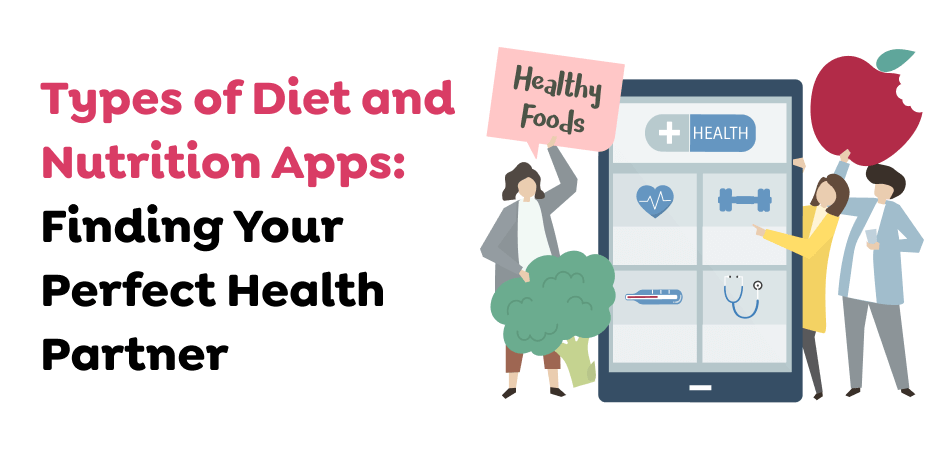
The secret to creating a successful fitness application idea is to find an area of interest or solve a problem that aligns with the customer’s requirements. So, now we’ll learn the different types of nutrition and health you create.
Nutrition Tracking App
An app for tracking nutrition is a form of nutrition and diet app designed to assist consumers in monitoring their diet and understanding its impact on their health. The app lets users search for certain products or scan barcodes on foods for nutritional information, such as macronutrients and micronutrients, minerals, vitamins, and more.
Calorie Counter App
As the title suggests, the apps are primarily concerned with tracking calories and macronutrients, such as carbohydrates, oils, proteins, and other fats, consumed by the users. By providing an inventory of foods, they can monitor the daily intake of calories and nutrients.
Diet Specific Apps
The apps are tailored to certain eating habits, such as vegetarian, vegan, ketogenic, paleo, gluten-free, and ketogenic diets. They provide tips on cooking and menu plans that can be tailored to users’ preferred lifestyles.
Water Intake And Hydration Apps
Being hydrated in a hectic life can be difficult, and that’s why drinking water apps have become so popular. Users can monitor their water consumption and boost the amount of water they drink. The app provides alerts to ensure that users are hydrated all day. This is a fantastic app concept to create and change the marketplace with.
Health Condition Management Apps
They target certain ailments, including heart conditions, diabetes, and food sensitivities. The primary objective is to help users control their health with individualized meal plans, tools for tracking education resources, and reminders of their condition.
Nutrition Education And Information Apps
The apps are nutrition-related and concentrate on providing informative information, content, and resources on health and nutrition. They are designed to inform users and provide them with a better understanding of nutrition and dietary guidelines. After establishing the background of different types of nutrition and diet, we can now turn our attention to the features of tracking and diet apps.
Also Read : How to Develop a Cash Advance App Like MoneyLion: Key Features and Cost Insights
Must-Have Features For a Successful Diet-Tracking App Like Lifesum
![]()
With numerous competing apps, what distinguishes effective apps like Lifesum from others? It is the features that it offers. Let’s have a look at the features of a profitable nutrition and diet tracking app.
Registration
It should go as smoothly as possible. We recommend Apple ID, Facebook, or Google Account because people already understand how these apps work, and the user experience is effortless. Ideally, let them log in straight into the application, with no registration required. Offer to sign up if a user wants to use sophisticated capabilities, e.g., charts, or after data completion.
Personal Profiles
Once the application is downloaded, the user must register and establish an account. In this step, the user must fill in their personal details, including name, gender, age, height, weight, foods they prefer, the level of allergies, and exercise.
Book of recipes
Your users will love the chance to discover healthy dishes in the app. Include pictures, videos, or even audio instructions for your recipes. You can also allow your customers to evaluate recipes and then sort them according to keywords, ingredients, calories, and categories.
Diet plans
Offering diet plans can help users maintain a healthy diet. A typical diet plan contains meal suggestions, nutritional advice, recipes, and suggested daily calories.
Goals
A nutrition app must contain user-specific expectations. How can you develop an effective diet program when you do not know the goals your users would like to achieve? The typical goals are losing and maintaining weight and adhering to an established diet.
Calorie Tracking Dashboard
Dashboards that show users’ performance are the sole reason they provide any information to your mobile application. It is, therefore, imperative for every app’s creator to build a complete dashboard that’s easy to use and doesn’t overwhelm users in the same way.
Nutrition Data Input
This is the heart and soul of your app. If the user can’t quickly and easily enter the menu, they’ll be unable to stay on the site for long. Planning and designing the input screen, including the calorie calculator, is crucial to the project’s success.
Data Insights
Beyond calories, a good app must track macronutrients (carbs, protein, and fat) and micronutrients (vitamins and minerals) for a complete view of your daily intake. The ability to track progress over time through weight charts, nutritional breakdowns, and reports on goal accomplishments provides a feedback loop that encourages users to take action and reinforces positive behavior changes.
Content And Community
An extensive library of healthful recipes, with customizable options that cater to various preferences and diet restrictions, ensures that users are motivated and focused. Incorporating education-based content about health, nutrition, and setting goals further equips users with the skills needed to achieve their goals.
You could consider offering coaching in the app or consulting with registered dietitians at a premium level, which adds a level of worth. In addition, creating a sense of community by offering forums, challenges, or social media integration encourages peers’ support and improves user retention.
Social Features
Every application with user-generated content continues evolving faster than others. Why not take advantage of this opportunity? Many people love to talk about their new lifestyles and weight loss achievements. Social media sharing could turn the entire process into a competition wherein friends compete against one another.
Advanced Nutrition API
Calculating BMR and BMI during onboarding and monitoring the amount of calories burned by receiving information from fitness trackers with the nutritional tracking function will improve the view of nutrition value.
Notifications
Then, your mobile application must convince users to adhere to your schedule and provide their personal information. Ideally, you should have specific settings where users can alter their preferred notifications (e-mail and push notifications) to be notified of various in-app events.
Barcode Scanner
The top food tracking app’s barcode scanner function helps users determine the amount of nutrients in food. Point the camera on your smartphone at a barcode. The consumer will be able to see information such as the amount of fat, sugar, and calorie count. Barcode scanners are useful features that allow consumers to make educated choices.
User-Generated Content
Content created by users can help increase engagement. Nutrition and diet apps will allow users to discuss their food and nutritional ideas with other users. The application could include a feature that allows users to post new health recipes they have prepared. People will feel more connected to the diet app by sharing their ideas.
Integration And Ecosystem Building
Connecting to wearable devices provides a more complete picture of their overall fitness by sharing activity information and calories consumed. In addition, working with grocery delivery or meal-kit suppliers makes it easier to purchase nutritious food items based on personal advice. The resulting ecosystem is an efficient and easy-to-use experience.
Also Read : How to Create a Facial Recognition App: A Comprehensive Guide
Steps To Develop Diet And Nutrition Tracker Apps like Lifesum
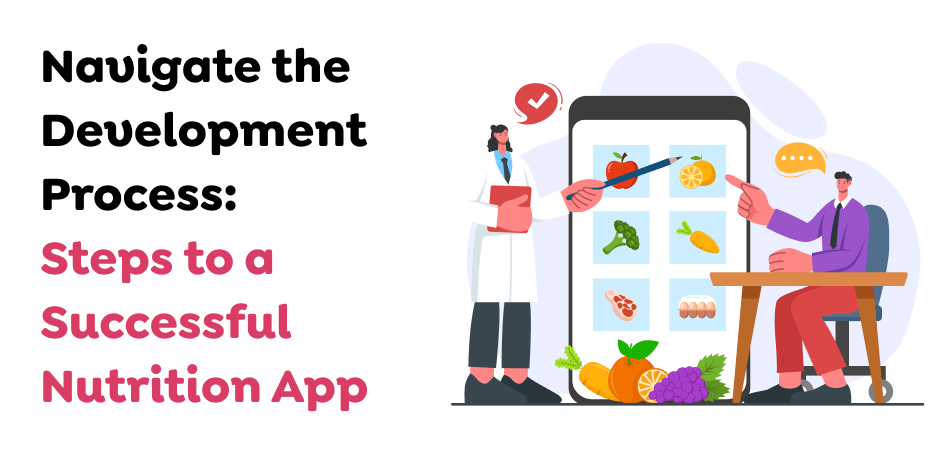
The development of diet and nutrition tracker apps like Lifesum involves a number of crucial actions, including planning and then implementing these plans. This is why we worked with a group of professionals who are experts with a vast understanding of how to develop an app similar to Lifesum. If you want to build a successful app similar to Lifesum, let’s get into the process.
Ideation And Market Research
The first step is in the process of developing an app similar to Lifesum, and you have to have a solid understanding of the path. Analyze the importance of the diet plan and nutritional app marketplace to identify areas of weakness, determine users’ needs, and then formulate your pricing plan.
This is why it is crucial to have an adequately described target audience and an in-depth understanding of their issues. Internal brainstorming may result in concepts, feasibility studies, and a detailed market analysis, which could be found by developing a food delivery application business.
App Design And Prototyping
This is the next step of developing an app similar to LifeSum. When the concept is refined, work by designing the application with an end user with the user in mind. Users’ involvement requires an interface that’s visually pleasing and simple to use. Before developing, test and optimize your user experience using interactive prototypes developed by a mobile app development company in Canada.
Feature Development
This is the third step in the fitness app’s development process. Food databases, meal planning, macronutrient monitoring, and calorie monitoring are some essential tasks. The best diet and nutrition app will stand out from other apps with innovative options like customized meal plans, recipe suggestions, and wearable device integration. A reputable nutrition and diet app developer can implement these capabilities and guarantee maximum performance and scaling.
Testing And Quality Assurance
It is the final phase of creating an application similar to Lifesum, where you have to discover and correct weaknesses and performance issues. Thorough testing is crucial in fitness app creation. It’s crucial to test the app on various operating systems and devices, as well as user-related issues. Most people don’t have to know that fitness app developers can conduct thorough testing to provide the best user experience.
Launch And Iteration
The last but not the most minor step in developing an app such as Lifesum is that the app’s story begins when you debut. In the beginning, work to attract users and market must be attainable. Following the launch, monitoring users’ feedback and analytics is crucial in identifying areas that require expansion. Getting help from a fitness application firm that develops apps for you with promotions, updates after release, and optimizing app saves is possible.
Cost To Develop An App Like Lifesum
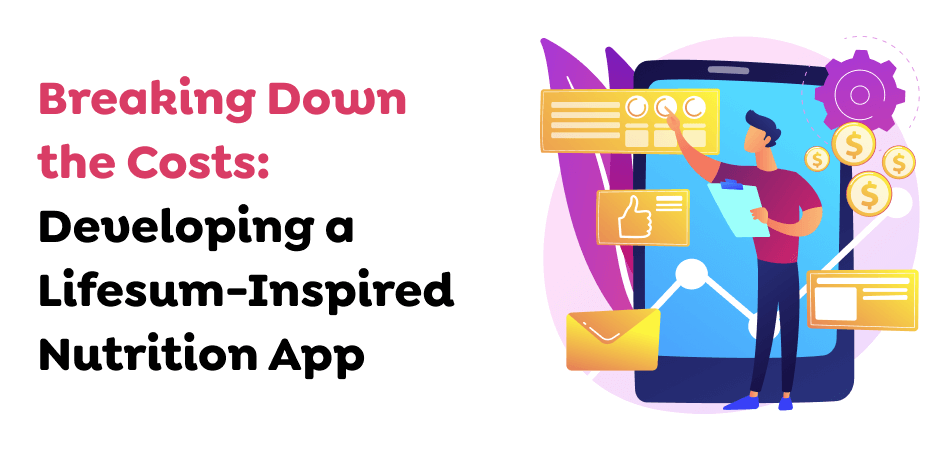
Let us answer this question if you’re wondering how much Lifesum costs. This part of our blog offers astonishing information about the costs of developing apps like Lifesum. The Lifesum app costs indeed need to be defined by significant funds. However, knowing that funding is contingent on several elements is also crucial. The price of building apps like Lifesum differs based on multiple factors.
App Complexity
The first step in developing primary monitoring capabilities requires less time than developing additional complex functions like meal-making programs based entirely on artificial intelligence or augmented reality—nutrition education.
Features
The level of sophistication and the number of features you can add greatly impact costs. A basic app with core functions like food tracking and goal setting is more affordable than a version with more advanced functions like AI-powered meal suggestions or connectivity with smart devices.
Development Team
The place of work and level of your development team influence the hourly rate. People working in regions with low living costs could cost less than those working in well-established tech hubs. However, experienced developers might be able to work more quickly and create better-quality code, possibly reducing the cost per hour.
Design And UI/UX
A program’s user interface and design (UI) and user interaction (UX) are significant factors in its attractiveness to potential customers. If well-designed, user-friendly, and appealing, the application will more likely draw and maintain users over poorly designed ones.
However, creating an excellent UX/UI can take time and require skilled developers, raising the total development price. It is, therefore, essential to find a compromise between aesthetics and functionality when developing an app for tracking nutrition and diet.
Platform
Development for both iOS and Android generally costs more than building only one platform. A cross-platform approach to development is more economical; however, it can be limited to certain functions.
Location
The location of the team’s development can influence the costs. Hiring a local team could cost more, but it will allow for more outstanding communication and better collaboration. Employing a remote workforce or outsourcing the work to a different location could save money. However, there are issues about timing zones and communications.
Development Team
Developing apps like Lifesum is expensive, and an internal process or the use of Android app developers or service providers has impacted the possibility of improvement.
Here’s an estimate of the cost to develop a similar app as a Lifesum:
Basic App: $20,000 – $65,000
Medium Complexity App: $55,000 – $130,000
Advanced App: $125,000+
Monetization Strategies For Nutrition And Diet Tracking Apps Like Lifesum
If you’ve decided to build health and fitness apps like Lifesum, now is the perfect time to plan how to generate revenue from the app because making money is the goal at the time of completion.
In-App Advertising
In-app advertisements are sought-after methods of earning revenue via health and nutrition applications. You’re compensated each time a user is exposed to an advertisement and clicks it. Numerous popular apps for nutrition earn money from advertising in-app.
Paid app
It is a revenue model that requires users to be charged to download the application. However, it is essential to be cautious with this approach, as many similar applications are available. Some users might not want to spend money on the app. It is possible to use this revenue strategy if you’re confident that your app offers features you don’t provide regarding features or style.
Affiliates & Partnerships
Partner with food organizations, health educators, and nutritionists to create unique products or content for the Lifesum mobile application creation. Commissions or affiliate charges can be utilized to recover costs within the top diet tracker application.
Data Monetization
You must anonymize and combine individual data to gain valuable information about dietary habits and options and insight into nutritional choices and habits. It’s important to know that apps developed on demand are solutions available for research and marketing purposes. These records can be offered to food companies, healthcare businesses, and companies that conduct market research.
Freemium Versions
It is the preferred method of revenue for many nutrition and health applications. These apps comprise both paid and free content. They are gratis with basic or no capabilities, but customers must spend a set sum to access more features.
Because most users are likely to use free diet applications, a cost-free application is a good choice for users. Additionally, users can access more advanced features with the payment of a fee you want to.
Future Of Nutrition And Diet Tracking Apps
The future of nutrition-tracking apps offers exciting opportunities because of the advances in the Internet of Things, blockchain, and artificial intelligence. This is a peek at what’s coming up:
Hyper-Personalization With AI
Going beyond the basics of calorie counting, AI algorithms will study your preferences and data to recommend a personalized menu, identify patterns in diet, and identify potential deficiencies in nutrient intake. Examples include apps that suggest meals according to your preferences, health objectives, and food inventory. The level of customization can create an interactive and memorable user experience.
Complete Integration IoT
Smart kitchens and appliances can seamlessly integrate with your nutritional app. Imagine refrigerators that automatically update your app’s inventory or smart ovens that adjust cook times according to the recipe’s nutrition profile. IoT integration could make it easier to manage the entire cooking process and make healthy eating easier and more convenient.
Improved Food Tracking Using Blockchain
Blockchain technology could revolutionize the tracking of food products by guaranteeing transparency and the ability to trace by scanning the barcode on a particular product and immediately accessing the complete nutrition profile. A secure blockchain ledger saves its origin details, including allergen alerts. This greater transparency can help people to make more informed decisions regarding the foods they consume.
Focus On Preventative Health
Nutrition apps will go beyond weight management and dive into preventative health. AI will analyze your eating habits and detect potential dangers of chronic illness, prompting preemptive measures and individualized healthcare guidance. This trend towards prevention can make nutrition apps vital tools for improving overall health and managing your health.
Conclusion
The marketplace for nutrition and diet tracking apps is growing, driven by the growing emphasis on wellness and health. Following the tips in the previous paragraphs, you can create a unique diet-tracking system that can compete with established brands like Lifesum. The key is identifying a niche in this vast space and catering to a distinct customer’s needs.
Suppose you’re looking for customized meal plans, gaming experience, deep data analysis, or a particular focus on food preferences. In that case, there’s plenty of room to innovate in this constantly evolving sector by focusing on the user’s well-designed application. A sustainable strategy for monetization that empowers customers to reach their health goals and carve out their own space within this lucrative marketplace.
Get in touch with us today to explore how we can help you create your own diet and nutrition tracker app like Lifesum. Let’s bring your idea to life!
Get In touch
We are excited to here from you and let’s start something special Together. Call Us for any inquiry.
Write us
sales@techugo.caJust a call away
About you

